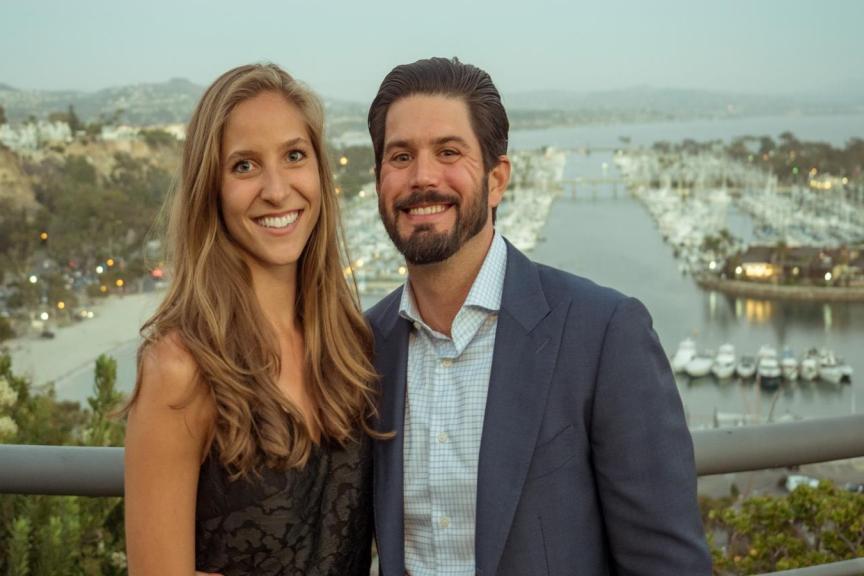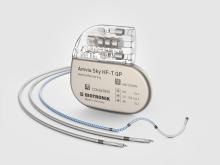Remote Monitoring Through the Eyes of an Athlete
Dave Remington, 34, is an active athlete, always on the water and competitive in CrossFit. He also works for one of the largest corporate real estate consulting teams in the world. In early 2020, he started wondering why he wasn’t feeling so well, despite the fact he was in great physical shape.

“I was starting to experience complications and shortness of breath,” said Dave. “This was very intermittent, every few days, or once a week, and I chalked it up to the fact I was staying home all the time and not doing as much as I was used to. I was working from home, like a lot of people in a tiny house and never going anywhere. Eventually it got to a point where I realized this is not okay.”
Dave went to an urgent care, where he was directed to go see an electrophysiologist that same day.
“I said I’d make an appointment,” said Dave. “And they said urgently told me I needed to go that same day. I'm 33 years old and haven't been to see a doctor in five years, except for an annual physical. So that freaked me out, but that's when I met Dr. Ehrlich.”
Dave was initially put on a temporary heart monitor and went through a gamut of tests – stress tests, echocardiogram and a cardiac biopsy. It was clear he was experiencing significant abnormal heart rhythms. He was reassured by a good friend, who was the former head of cardiology at a major research university in Southern California, that he was doing the right thing in getting checked out.
Ultimately, together with his care team, the decision was made that long-term remote cardiac monitoring was the best option for Dave to track his heart rhythms and gather data that helped them understand when and how they happen. For his physician, access to details about how Dave’s heart was doing while he went about his daily routine was important in making sure they were aware if there was a need to change his treatment
“Having the remote monitor to help the doctor identify major problems was comforting to me because you feel a lot of things when you're having heart issues. It's been a process and the data we're gathering is helpful in figuring out what's going on with my heart as I go about my normal activities.”
“Having the remote monitor to help the doctor identify major problems was comforting to me because you feel a lot of things when you're having heart issues,” said Dave. “It's been a process and the data we're gathering is helpful in figuring out what's going on with my heart as I go about my normal activities. From my perspective, it makes me feel better knowing that there's something recording what's going on and we're going to have some awareness around if or when my condition starts deteriorating.”
Once the decision was made to give Dave a long-term remote cardiac monitor, he made the appointment to have the tiny remote cardiac monitor inserted under the skin on his chest.
“I went in and the actual procedure itself was not a big deal,” said Dave. “I'm a pretty squeamish person, so it was unpleasant having something put under my skin from a squeamish perspective, but it wasn't painful and the whole thing took about 10 minutes.”
As a very active athlete, without a lot of body fat, Dave experienced some discomfort as he adjusted to having the new monitor placed under his skin. Today, he says it’s not even noticeable, unless he bumps something near his monitor or goes through TSA security at the airport and has a card to show he has a cardiac monitoring device. He also uses a smartphone app to see data from his device, which is helpful when his heart isn’t feeling quite right.
“I don't think about it every day,” said Dave. “I probably open that app once every two weeks, if I feel like I'm having a significant incident, or I just want to look at the heart rate variability. I do think that data is pretty interesting.”
Today, Dave feels like he could be back to normal. However, unrelated to his monitor, he has a few other challenges with his back and knee that are keeping him on a less rigorous training schedule. As for Dave’s family and close friends, he acknowledges his heart journey has been almost as significant to them as it has been to him.
“For my wife and my parents, knowing that I've got something monitoring my heart has been really, really comforting.”
“I'm a pretty easy-going guy, and I don't tend to stress about what I can't control,” said Dave. “For my wife and my parents, knowing that I've got something monitoring my heart has been really, really comforting.”
When he acknowledges the journey that others might be on who have similar heart rhythm conditions, he emphasizes the role that remote cardiac monitoring can play. He noted the benefit that comes with knowing decisions about his care are being guided by data.
“It seems unreasonable to be fearful of something like this,” said Dave. “I'm a big data person, it's a big part of my job. Having accurate data to drive decision-making is irreplaceable.”
He acknowledges there are bumps in the road on his journey, including dealing with insurance, but he’s thankful for the care he is receiving.
